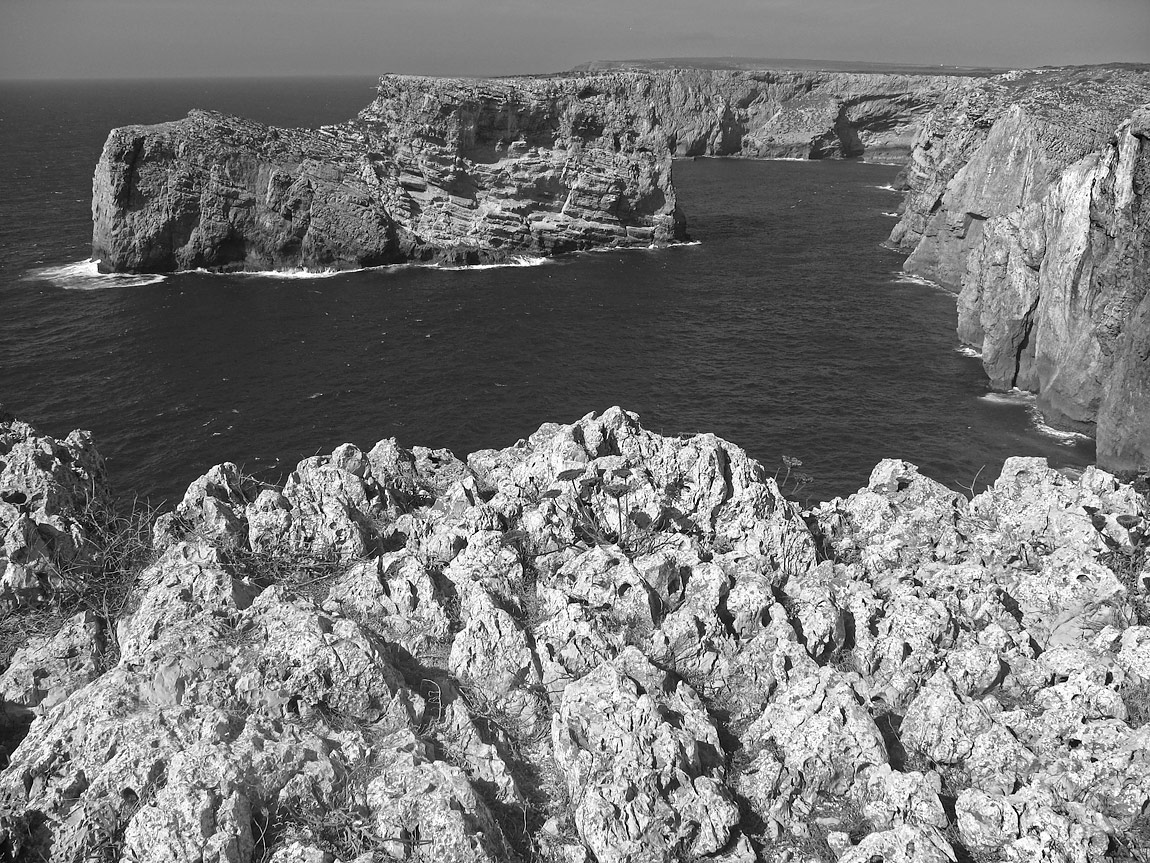Cape São Vicente, located in the extreme southwest of mainland Portugal, is the most extraordinary promontory on the Portuguese coast and perhaps on the Iberian Peninsula. The limestone cliff, steep over the ocean, rises a few hundred meters from the sea. From the top, the view is magnificent but dizzying. It is not uncommon for some very daring and fearless line fisherman to make a false step and fall into the water. We have to approach the cliff's edge to see below carefully; the high waves hit the rocky wall and crumble into white foam. In the monumental Geography (Book III, Chapter 1, 3-4), Strabo (ca. 63 BC – 24 AD) called it the Promotorium Sacrum, stating that it was "the most westerly point, not only of Europe but of the whole inhabited world", thus giving a symbolic and mythological charge to the place. This was reinforced by the Roman writer Rufius Avienius (4th century AD), who in Ora Maritima (vv. 201-204, 212-217) wrote: "Then, there where the sidereal light declines, Cape Kinetic [Cape Saint Vincent] emerges toweringly high, extreme point of rich Europe, and enters the salty waters of the Ocean populated by monsters". "The promontory that scares by its rocks, [is] consecrated to Saturn. The rough sea boils and, rocky, the coast stretches far away".
The place is also linked to the history of Christianity and Portugal. Saint Vincent was martyred in 304 AD in Valencia by order of Publius Dacianus, legate of the Roman emperor Diocletian. The persecution of Christians led to his arrest and martyrdom. After he died, his body was exposed to be devoured by vultures. However, two crows prevented the saint's body from being torn apart. With the Muslim invasion of the Iberian Peninsula, his remains were placed on a boat adrift at sea, which landed on the coast precisely at Cap São Vicente. A pious widow buried the body in the place where a Mozarabic sanctuary was later built and converted into a pilgrimage centre. According to the legend, the crows remained forever vigilant, guarding the saint's relics. The site was venerated during the Islamic period. Afonso Henriques, the first king of Portugal, decided to rescue the relics that were then in territory occupied by Islam. In 1173, a group of Lisbon inhabitants went by sea to the cape and brought the saint's remains to the Lisbon Cathedral. According to the legend, two crows protected the ship during the return journey. Saint Vincent was immediately made patron of the capital. Lisbon will adopt as its weapons the ship with the corpse of Saint Vincent, accompanied by two crows, one at the bow, the other at the stern, resulting in one of the most unique heraldic records in all of Europe.
The image I now present was captured at the end of an afternoon in August 2010. I approached the edge of the cliff on the north side of the cape and was marvelled to see the small Island of the Gulls, the Agonis of Rufius Avienius (the name of Agonis, if related to the Greek verb agon, would mean "island of the fears" or "island of dangers"). Some plants resisted summer dryness at my feet, in the foreground, in the whitish limestone, cracked by erosion. A thousand years ago, I imagined the boat with the saint's remains sailing in the ocean "protected" by the two crows. Black-and-white enhanced the drama of the image. High shutter speed froze the ocean. What a magical place…


